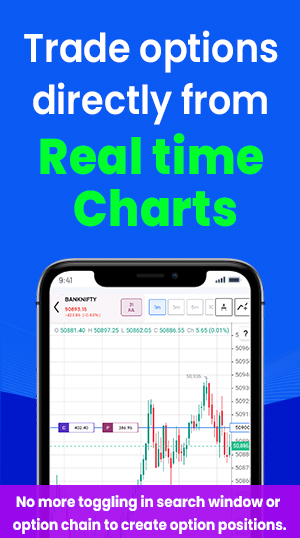Trading in the stock market is not a blindfold game. A trader has to plan a strategy based on specific patterns, indicator on which he would trade in securities. Trading with a defined strategy will not only help you to choose the best stock, but it will also help you find out the buying and selling levels to minimise risk, maximise profit from stock move. A trading strategy will also help you to minimize your losses if the market does not move as per your expectations. Hence, choose from different types of trading strategies and enjoy safe trading.
Most Common Top 10 Trading Strategies
-
Intraday or Day Trading
Intraday trading or day trading is one of the most common and popular trading strategies most of traders use to trade globally. In day trading you can enter into a trade position and have to close your position on the same day before the market closes. There are no restrictions you can trade many times during the day and can earn profits with intraday trading.
Also Read: How to Do Intraday Trading: Best Stocks, Charts & Strategies
Intraday is one of the riskiest trading strategies you might incur losses if the market or stock is not moved as per your expectations. Here you can use the technical indicators to know the best levels of buying and selling or book the profits to make your intraday trading successful. For intraday trading, you can use indicators like RSI, MACD, Bollinger Bands and other Oscillators that will help to know the market trend and trading range in the stocks.
Also Read: What is the Best Indicator for Intraday Trading in TradingView
-
Trend Based Trading
Trend-based trading is another strategy traders aim to capture the trading opportunity when the market is moving in a direction or trending. As per the trend, you can enter into the trade position and hold till the trend ends or you earn a significant amount of profits. To make the best use of trend-based trading, you need to identify the right trend.
Also Read: How to Identify Trend in Stock Market: 10 Points to Find Trend
In an uptrend, you can enter into long positions, while in a downtrend short-selling or selling strategy works. However, there could be no trend or the market might move sideways with a clear direction, here you can wait for the momentum or breakout in the market. As soon as the trend is defined entering into the trade position at the right time is necessary.
Also Read: How to Find Trending Stocks for Intraday Trading: Ten Rules
-
Momentum Trading
When there is a spike or huge movement in the price of a stock, a momentum-based trading strategy works. Some stocks don’t have significant movement due to lack of volume or low trading activities, but when there is some kind of news, events or corporate actions taken by the company. The momentum can be in any direction that you need to identify.
Sometimes there could be a false signal, and only a smaller moment happens and no further movements. Herr you should check the news or corporate events, the trading volume and use other technical indicators to confirm the reason behind the momentum. Once you realize the momentum could continue, you can take the trade position timely.
-
Swing Based Trading
Swing-based trading is another trading technique you need to know. When the market swings in both directions, you need to identify the range of swings. On high swings, you can sell and on the lower side, when the swing is at the bottom you can buy the stock. Swing trading is useful in the short-term in which need to hold your position from a few days to a few weeks.
Also Read: Best indicator for swing trading
Swing traders take advantage of oscillation in the market in which price swings between up and down range providing trading opportunities for them. Trading in the swings would be not easier unless you apply certain technical indicators to identify the right buying and selling points. In swing trading, you need to find the support and resistance level.
-
Breakout or Breakdown Trading
The breakout or the breakdown of the price from a trading range gives a trading opportunity to traders. This usually happens when the price comes out from a trading range or breaks the trajectory in which trading for many days. A strong momentum in the stock with the surge in volume pushing the stock price breaks the barrier and moves with new trends.
Also Read: What is Breakout & Breakdown How to Identify Breakout in Stocks
When the stock price or market moves in the upward direction, it is called a breakout, here you can create the long position. While a breakdown trading is when the price or market goes in a downward direction giving the opportunity for short-selling to traders. To trade with the trading strategy you need a confirmation of other indicators to ensure there is no false breakout or breakdown. Use the technical indicators to confirm the trend and enter into a trading strategy.
-
Trend Reversal Trading
Trend reversal if identified at correct time, can prove to be one of the most popular trading strategies you need to know. When the current trend suddenly ends and a new trend starts to form in the market it is called the trend reversal. You can grab this opportunity to do profit booking or trade as per the direction of the trend like an upward trend to a downward trend or vice-versa.
Also Read: What are the Best and most Accurate Trend Reversal Indicators
Trend reversal can be spotted easily with the help of technical indicators identifying the potential and strength of the new trend. A false indication can allure traders enter into the trade but no further continuation of the new trend will incur the losses. For not getting cough in traps you can take help of candlestick chart patterns for confirming the trend reversal.
Also Read: Which Candlestick Pattern is Most Reliable for Trend Reversal
-
Range Bound Trading
When the market moves in a range for several days, it also creates a trading opportunity for the traders. In range bound trading market stock price keeps moving in a range that is usually called the support and resistance levels. This is also like swing trading, but here short-term traders get the trading opportunity of frequent buying and selling, which is also called scalping.
To trade in the range-bound trading strategy, you need to keep focus on the short-term oscillations in the price of the underlying security. At the bottom, you can enter into the long positions, while when the price approaches to upper range you can go for short to take the opportunity of trading range that works like a barrier in both directions. But make sure to confirm the trend, as sometimes there is a breakout or breakdown of price due to a surge in volume.
-
Gap Up/Down Trading
A gap up or down opening of the price also gives a trading opportunity to the traders. A gap happens when there are no trading activities and the price moves sharply at a very high or low with no sequence of trades indicating the price has opened at the new price levels from its previous close.
A gap opening means, when the price opens above the previous day’s close indicating the buying signal. The gap-down opening means, when the price opens below the previous day’s closing price gives the opportunity for short-selling to the traders. You can easily or clearly see the gap up or gap down opening of the price through candlestick chart patterns.
-
Scalping Trading Strategy
Scalping in trading is the technique of placing orders and booking the profits on a small price movement. Scalping is the practice of trading with small profits from each trade with quick entering and exiting from such trades as soon as you earn the profits. It can increase your transaction cost or brokerage charges but can be profitable if traded with the right strategy.
As a scalper, you have to keep an eye on each trade and book the profits before the market trend changes or the price comes down to its buying levels. The risk and reward ratio in scalping-based trading is equal as you will not earn large profits but increasing the total number of trades will help you to make your entire trading journey profitable.
-
Algorithmic Trading
This is one the latest or you can say the tech-oriented trading strategy that become very popular among traders across the globe. It is an automated trading solution, in which trading software works itself trained with the programming of algorithms to analyse the various conditions and place the orders accordingly. It can place multiple orders at a time with high accuracy.
Also Read: What is Algo Trading How it Works and is it Profitable
Apart from that you can also choose from the wide range of trading strategies and set the Algo software to trade within that trading strategy rules. It can work at lightning speed to generate a huge volume of trades in the shortest span of time. You can also optimize your trading strategy to make the best use of this high-frequency trading software. However, you also choose from various Algo trading strategies for intraday or short-term trading.
Also Read: Short Term trading v/s Intraday trading: which one is more profitable
Summing-up
Apart from these top ten best trading strategies, there are more trading strategies like news-based trading, pairs trading, arbitraging, averaging, pyramiding, volatility trading, position trading, seasonal trading and positional-based trading. However, the above-mentioned are the most popular ones among the traders and are also suitable for beginners.
Also Read: Top 10 Things You Should Know Before the Stock Market Opens
Whatever the trading strategy, you should perform the technical analyses and use the technical indicators to confirm the trend and next of the market. And based on your predictions find out the best buying and selling point or profit booking levels to avoid the risk of losses and maximize your returns from the trading activities in the market.
Also Read: How to Stop or Avoid Overtrading in the Stock Market: 8 Tips

















